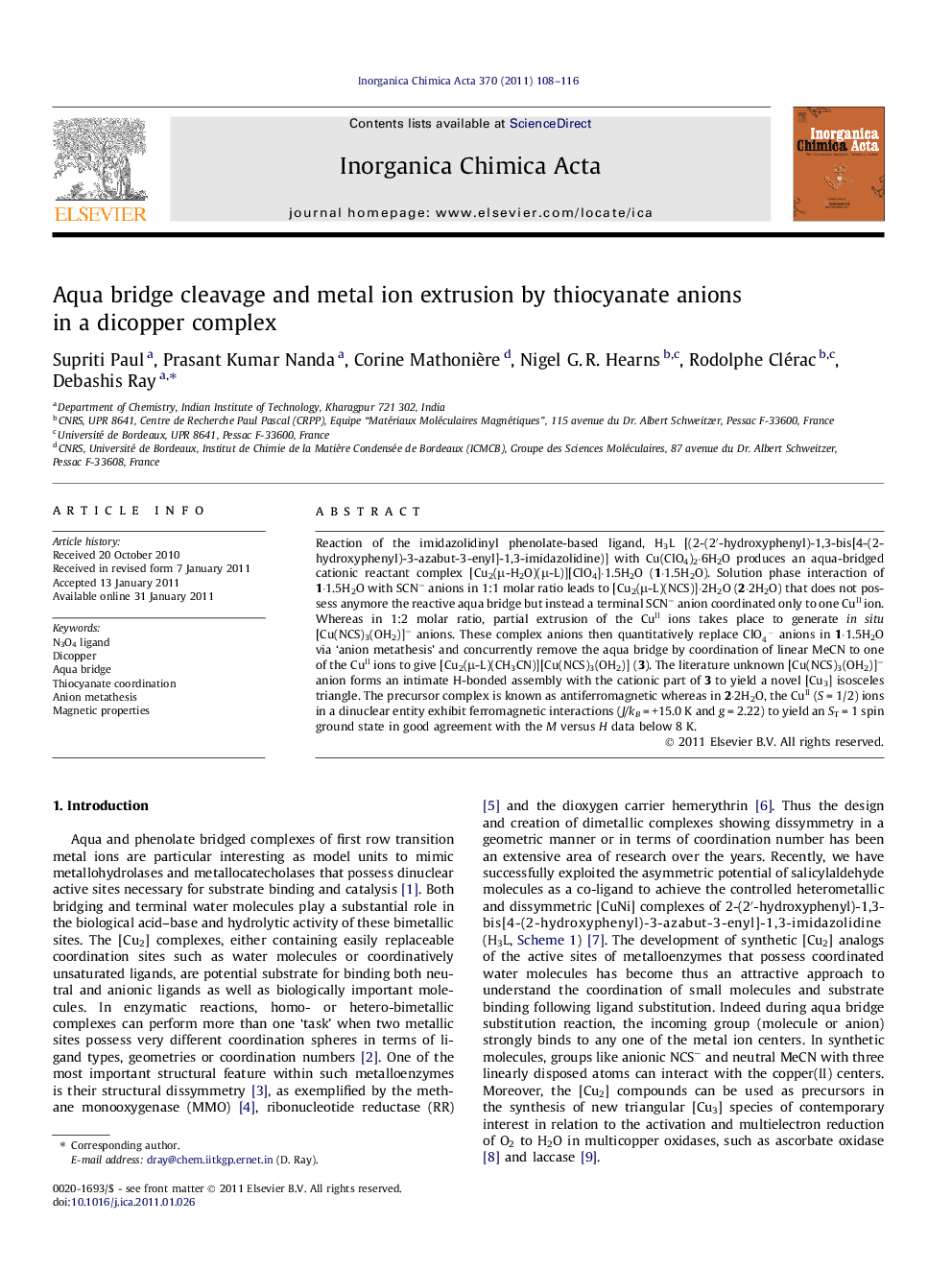| Article ID | Journal | Published Year | Pages | File Type |
|---|---|---|---|---|
| 1306266 | Inorganica Chimica Acta | 2011 | 9 Pages |
Reaction of the imidazolidinyl phenolate-based ligand, H3L [(2-(2′-hydroxyphenyl)-1,3-bis[4-(2-hydroxyphenyl)-3-azabut-3-enyl]-1,3-imidazolidine)] with Cu(ClO4)2·6H2O produces an aqua-bridged cationic reactant complex [Cu2(μ-H2O)(μ-L)][ClO4]·1.5H2O (1·1.5H2O). Solution phase interaction of 1·1.5H2O with SCN− anions in 1:1 molar ratio leads to [Cu2(μ-L)(NCS)]·2H2O (2·2H2O) that does not possess anymore the reactive aqua bridge but instead a terminal SCN− anion coordinated only to one CuII ion. Whereas in 1:2 molar ratio, partial extrusion of the CuII ions takes place to generate in situ [Cu(NCS)3(OH2)]− anions. These complex anions then quantitatively replace ClO4- anions in 1·1.5H2O via ‘anion metathesis’ and concurrently remove the aqua bridge by coordination of linear MeCN to one of the CuII ions to give [Cu2(μ-L)(CH3CN)][Cu(NCS)3(OH2)] (3). The literature unknown [Cu(NCS)3(OH2)]− anion forms an intimate H-bonded assembly with the cationic part of 3 to yield a novel [Cu3] isosceles triangle. The precursor complex is known as antiferromagnetic whereas in 2·2H2O, the CuII (S = 1/2) ions in a dinuclear entity exhibit ferromagnetic interactions (J/kB = +15.0 K and g = 2.22) to yield an ST = 1 spin ground state in good agreement with the M versus H data below 8 K.
Graphical abstractReactions of aqua-bridged cationic [Cu2] complex with SCN− ions in different stoichiometries produced new asymmetric neutral [Cu2] and H-bonded [Cu3] complexes following thiocyanate binding, metal ion extrusion and anion metathesis.Figure optionsDownload full-size imageDownload as PowerPoint slideResearch highlights► Reactivity and coordination chemistry of copper(II) with binucleating ligand. ► Cleavage of the aqua bridge of dinuclear copper(II) complex by thiocyanate anions. ► Crystal structure of new dinuclear copper complexes with coordinating SCN− ligand. ► Identification of [(SCN)3Cu(OH2)] as a counter anion. ► Intra-complex antiferro- and ferro-magnetic interactions.
